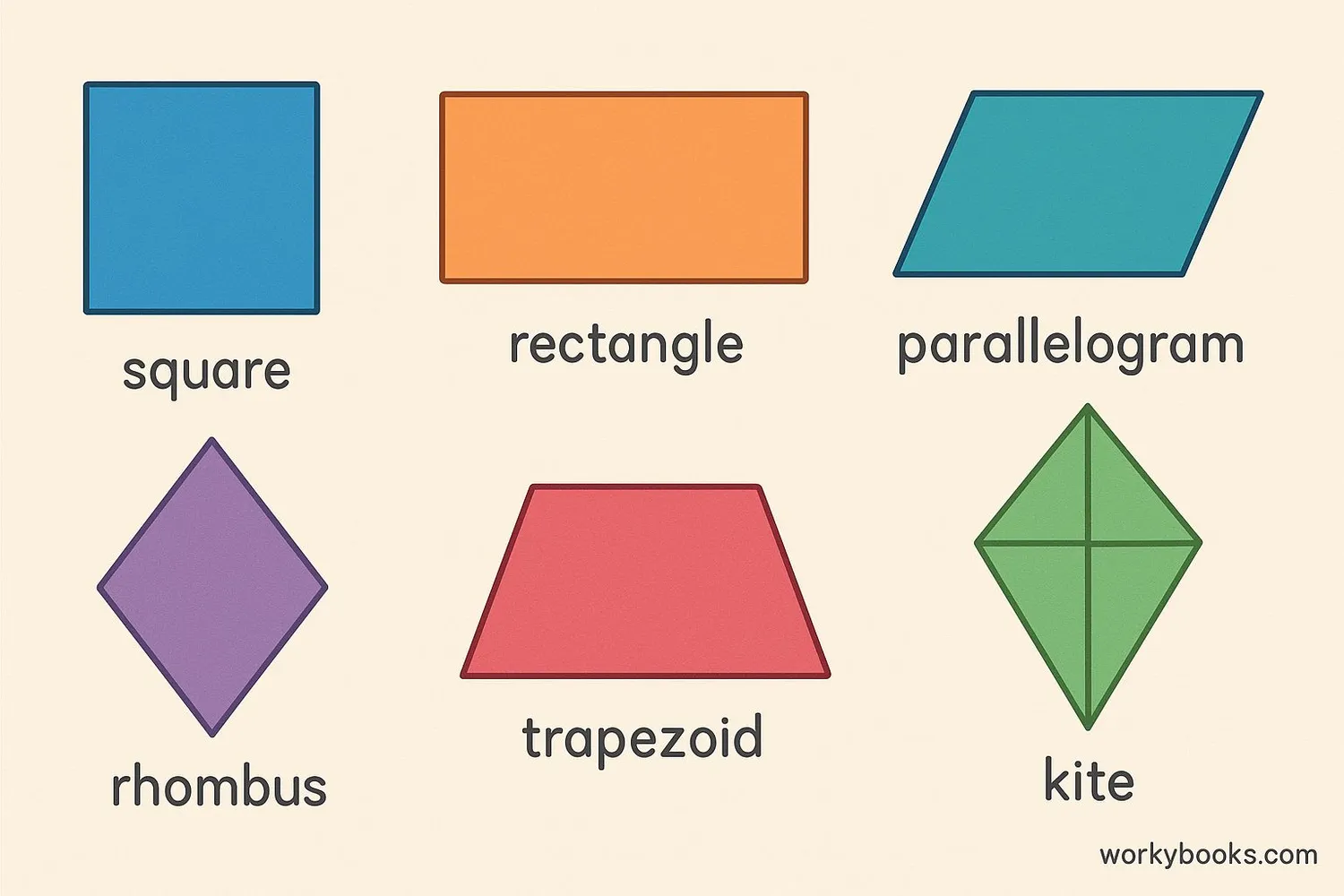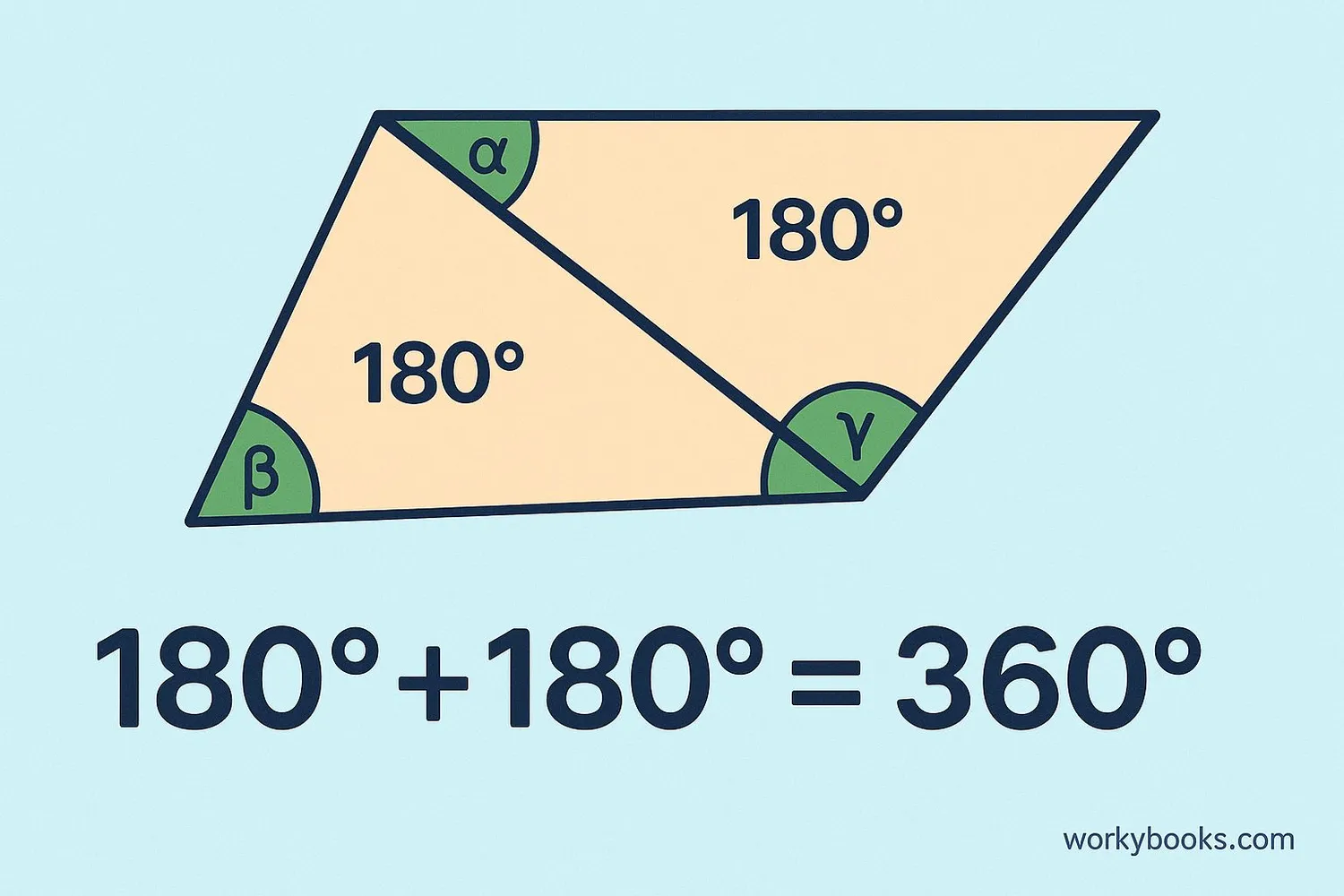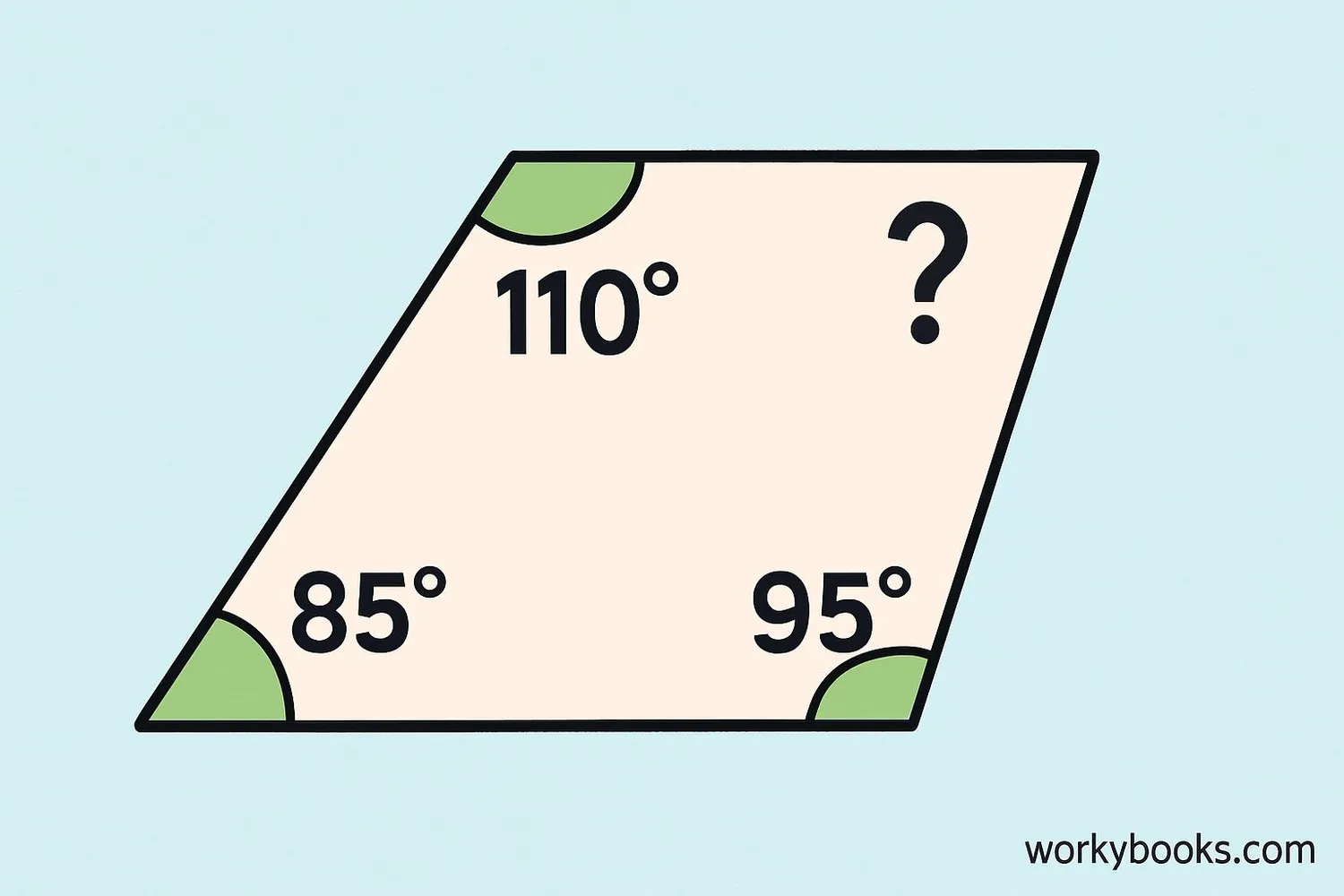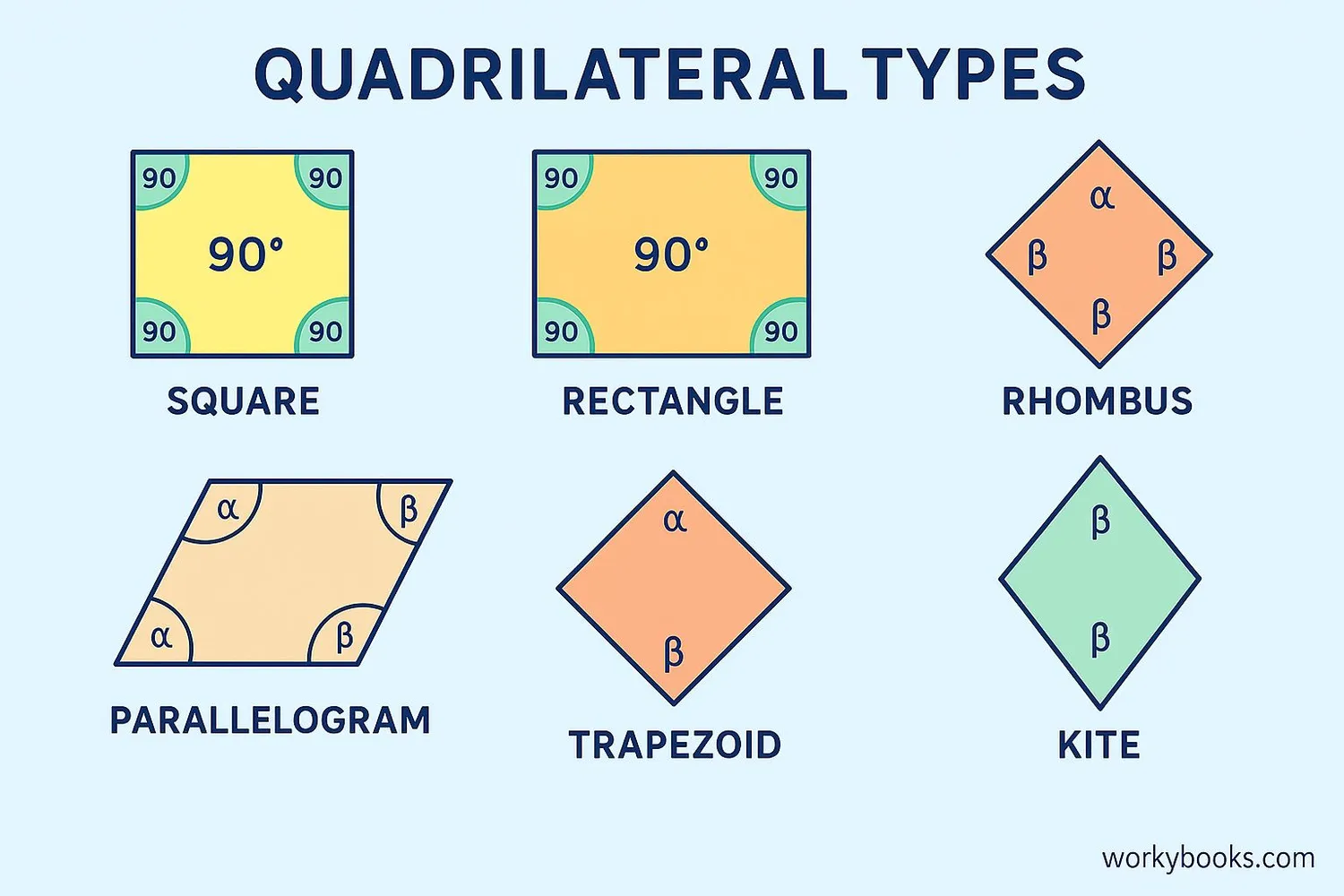Angles in a Quadrilateral - Definition, Examples, Quiz, FAQ, Trivia
Learn about quadrilateral angles with visual examples, properties, and practice activities
What is a Quadrilateral?

A quadrilateral is a polygon with four sides, four angles, and four vertices (corners). The word "quadrilateral" comes from Latin words meaning "four sides".
Quadrilaterals are everywhere! You can find them in shapes like:
- Squares and rectangles (like your notebook)
- Parallelograms and rhombuses (like some tiles)
- Trapezoids (like a bridge support)
- Kites (like the toy that flies in the sky)
Key Concept
All quadrilaterals have four sides, four angles, and four vertices. The sum of all interior angles is always 360 degrees.
Angle Sum Property

The most important property of quadrilateral angles is that they always add up to 360 degrees. This is true for all quadrilaterals, regardless of their shape!
Angle Sum Formula
The sum of all four interior angles in any quadrilateral is 360 degrees.
In a quadrilateral with angles 90°, 90°, 90°, and 90° (a square):
90 + 90 + 90 + 90 = 360°
In a quadrilateral with angles 100°, 80°, 70°, and 110°:
100 + 80 + 70 + 110 = 360°
Finding Missing Angles

Since we know the sum of all four angles is 360°, we can find a missing angle when we know the other three. Here's how:
Step 1: Add the three known angles together.
Step 2: Subtract that sum from 360°.
Step 3: The result is the measure of the missing angle.
A quadrilateral has angles measuring 85°, 110°, and 95°. What is the measure of the fourth angle?
Solution:
Step 1: 85 + 110 + 95 = 290
Step 2: 360 - 290 = 70
Step 3: The missing angle is 70°
Remember
This method works for any quadrilateral! Just remember the magic number: 360°.
Types of Quadrilaterals and Their Angles

Different types of quadrilaterals have special angle properties. Let's explore some common quadrilaterals:
Square
- All four angles equal 90°
- Opposite sides parallel
- All sides equal length
Rectangle
- All four angles equal 90°
- Opposite sides parallel and equal
- Adjacent sides may have different lengths
Parallelogram
- Opposite angles are equal
- Adjacent angles add to 180°
- Opposite sides parallel and equal
Rhombus
- Opposite angles equal
- Adjacent angles add to 180°
- All sides equal length
Trapezoid
- Exactly one pair of parallel sides
- Angles on the same side of a leg add to 180°
- No special angle relationships beyond the 360° sum
Kite
- One pair of opposite angles equal
- Diagonals perpendicular
- Two pairs of adjacent sides equal
Quadrilateral Angles Quiz
Test your knowledge with these practice questions. Choose the correct answer for each question.
Frequently Asked Questions
Here are answers to common questions about quadrilateral angles:
Geometry Trivia
Discover interesting facts about quadrilaterals and angles:
Ancient Quadrilaterals
The ancient Egyptians used quadrilateral shapes in their pyramid designs over 4,500 years ago. The base of the Great Pyramid is a near-perfect square.
Angle Sum Patterns
The sum of interior angles follows a pattern: triangle (3 sides) = 180°, quadrilateral (4 sides) = 360°, pentagon (5 sides) = 540°. The pattern is (n-2) × 180°.
Architecture
Quadrilateral shapes are fundamental in architecture. Rectangles form most building structures, while trapezoids are used in bridge designs for stability.
Nature's Quadrilaterals
While triangles are more common in nature, some crystals like pyrite form cubic (quadrilateral) structures. Honeycomb cells start as circular but become hexagonal when packed together.


